Lately I’m educating you the fundamentals you wish to have to find out about easy methods to knead dough. Be informed why kneading is crucial and essential step in maximum yeasted bread recipes, easy methods to do it correctly, and easy methods to know when your dough has been kneaded lengthy sufficient and is able to upward thrust. On this submit & video, I show 2 tactics I take advantage of, which you’ll use with any yeast dough that calls for kneading, whether or not you’re baking sandwich bread, cinnamon rolls, or home made pizza.
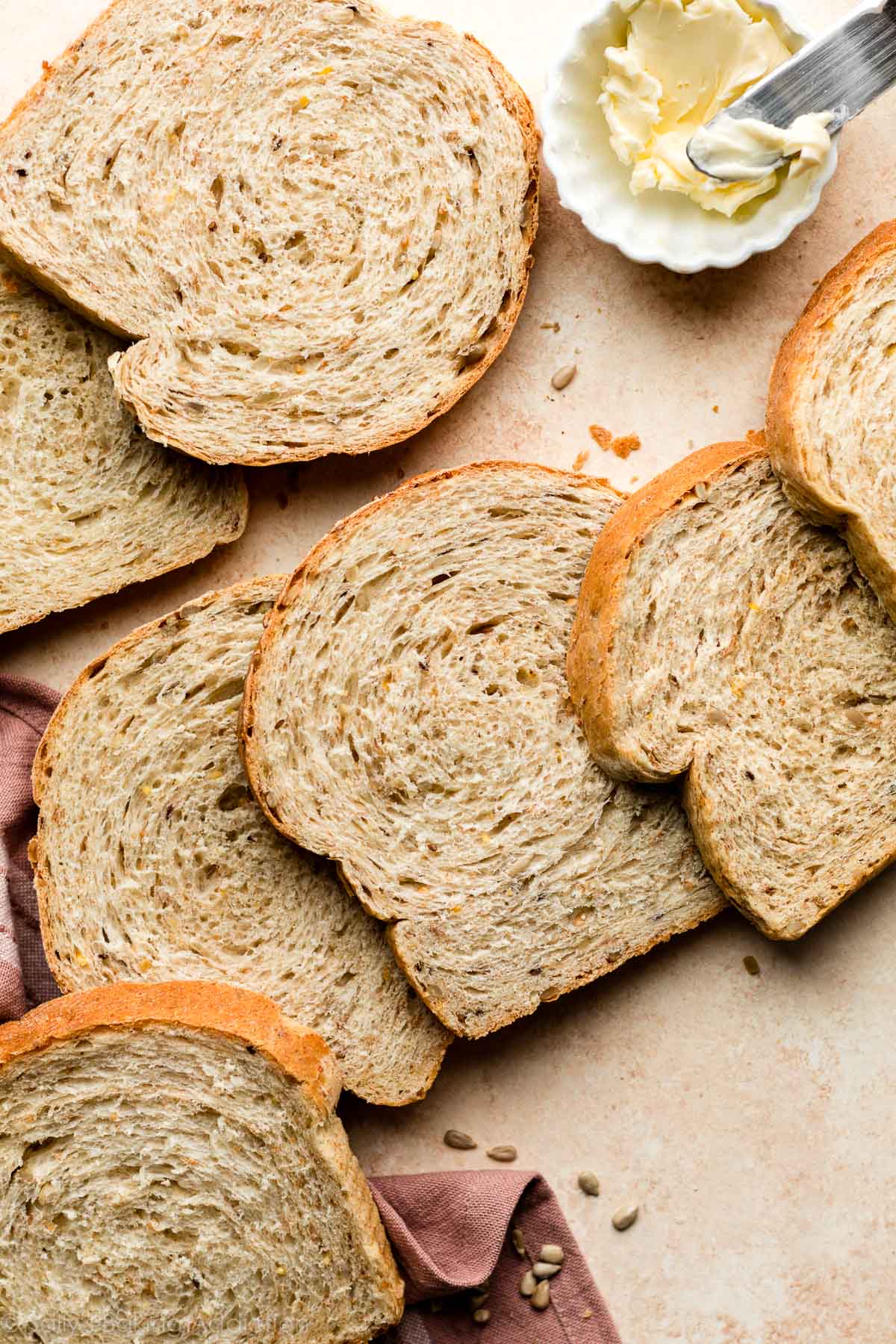
Regardless of the scrumptious style and welcoming aroma of fresh-baked bread, many aspiring bakers hesitate to start out the adventure of home made bread baking. I, too, have shyed away from it for a few years. There used to be simply no approach I may just conceivable deal with a dough with yeast. How horrifying!
However in truth that making yeasted bread is a shockingly easy procedure, so long as you might have dependable, approachable recipes and a fundamental figuring out of the way yeast works. (Plus, a bit of persistence!) The toughest section is, really, discovering the braveness to simply BEGIN.
By means of the best way, when you’re new to running with yeast, reference my Baking with Yeast Information for easy solutions to not unusual yeast FAQs. It’s a hugely useful place to begin, and can assist provide the base wisdom had to effectively embark in your bread-baking adventure. 😉
Lately’s submit is an extension of my Baking with Yeast Information. Right here I’m educating you easy methods to knead dough. Kneading dough is an very important step in bread baking, whether or not you’re making mushy multigrain bread (pictured above), breadsticks, entire wheat bread, gooey raspberry candy rolls, or flaky dinner rolls (pictured beneath).
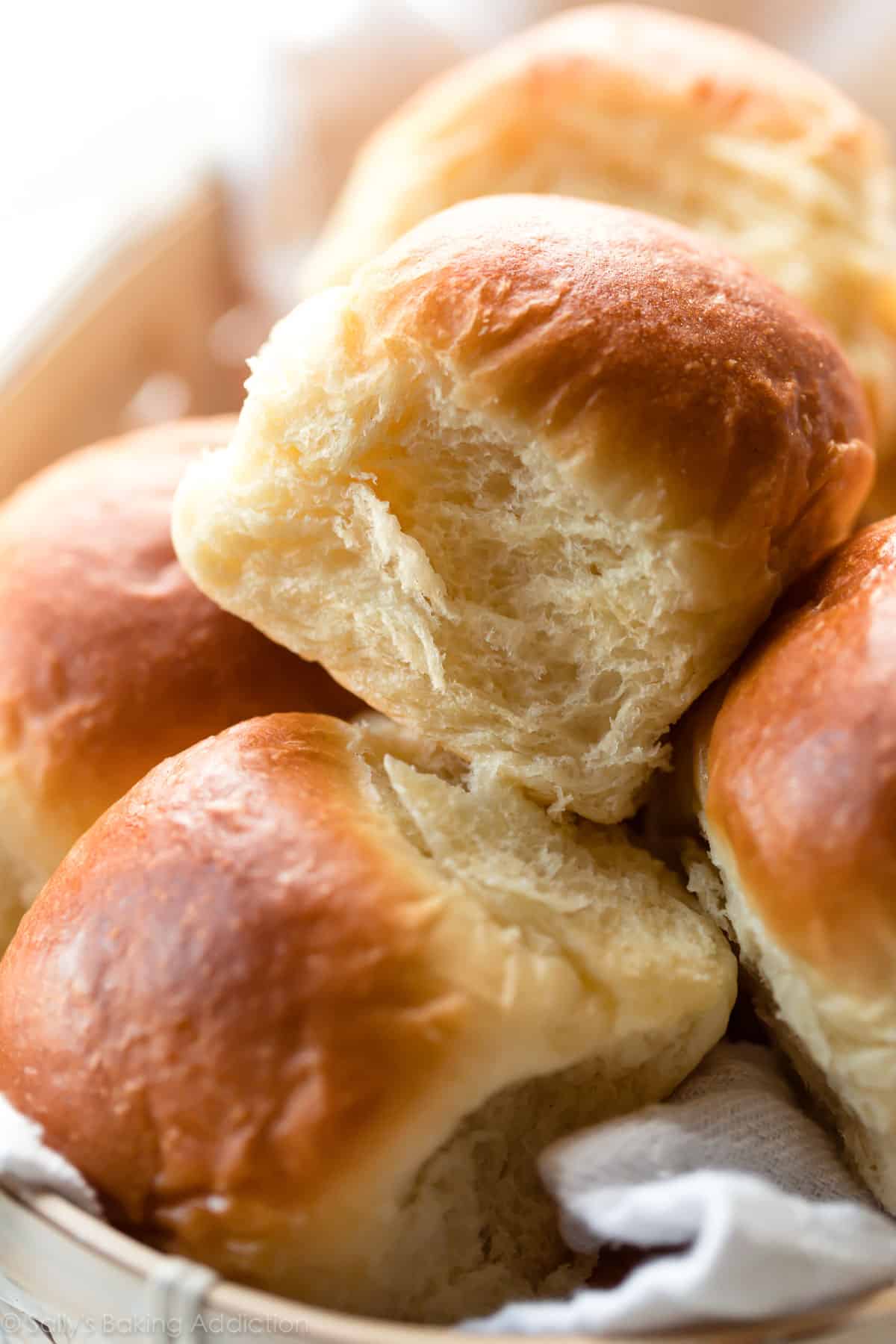
Why Do We Want to Knead?
Kneading serves a few functions.
First, we’re incorporating air into the dough. And 2nd, we want to stretch out the gluten strands to construct construction and power into the bread. Merely blending the dough in combination leaves us with a random, disorganized array of gluten proteins. We nonetheless must “broaden” the gluten, i.e., inspire the proteins within the flour and moisture within the dough to hyperlink in combination and shape a robust gluten community. This construction permits for trapping of gases so the bread will stand up great and prime. And gluten is what makes bread deliciously chewy.
For those who don’t knead your dough, your baked bread received’t upward thrust as prime, and the full texture and look will probably be dense. Correctly kneaded dough guarantees a softer, fluffier, taller, and chewier bread.
OK, that’s your science magnificence accomplished for as of late!
I’ve made yeasted breads ahead of that don’t require kneading, and feature a couple of printed together with this no-knead honey oat bread, cranberry nut no-knead bread, 4-ingredient artisan bread, and this jalapeño cheddar bread. So what’s the variation? The ones bread recipes use an overly rainy dough and a slow-rise approach, which permits for fermentation to happen because the extremely hydrated dough rests within the fridge for a minimum of 12 hours, and even longer.
Comparability Pictures
Check out the next image. At the left is a dense, squat, and crumbly loaf of sandwich bread. I didn’t knead the dough that produced this baked loaf. At the proper, I kneaded it because the recipe instructs. It’s the similar precise dough, handiest the left used to be no longer kneaded.
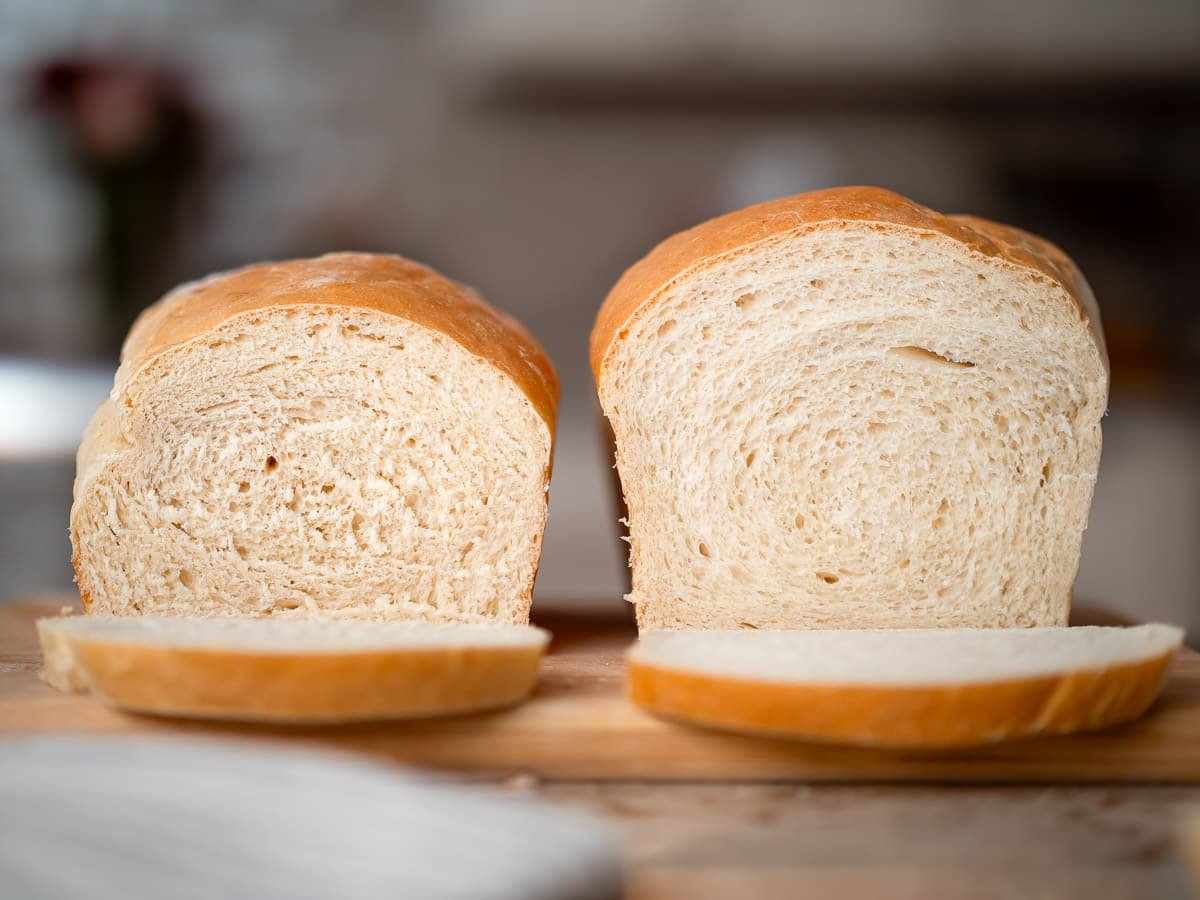
And, beneath, here’s that very same “no longer kneaded” loaf. As a result of I didn’t knead the dough, it didn’t have the power to entice the yeast’s gases.
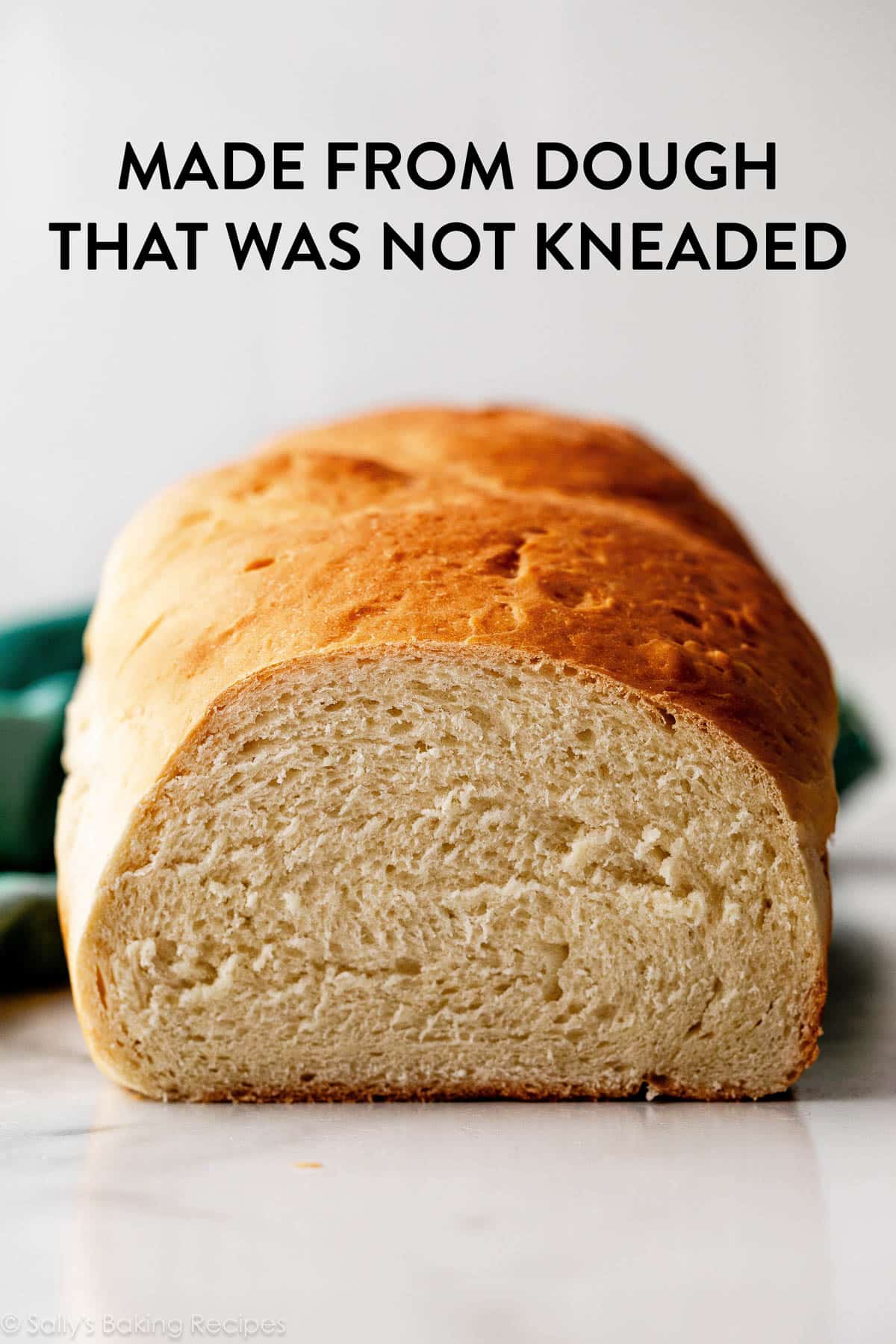
And now, the similar sandwich bread recipe, however I took the time to correctly knead the dough just like the recipe instructs. You’ll be able to see a MAJOR distinction.
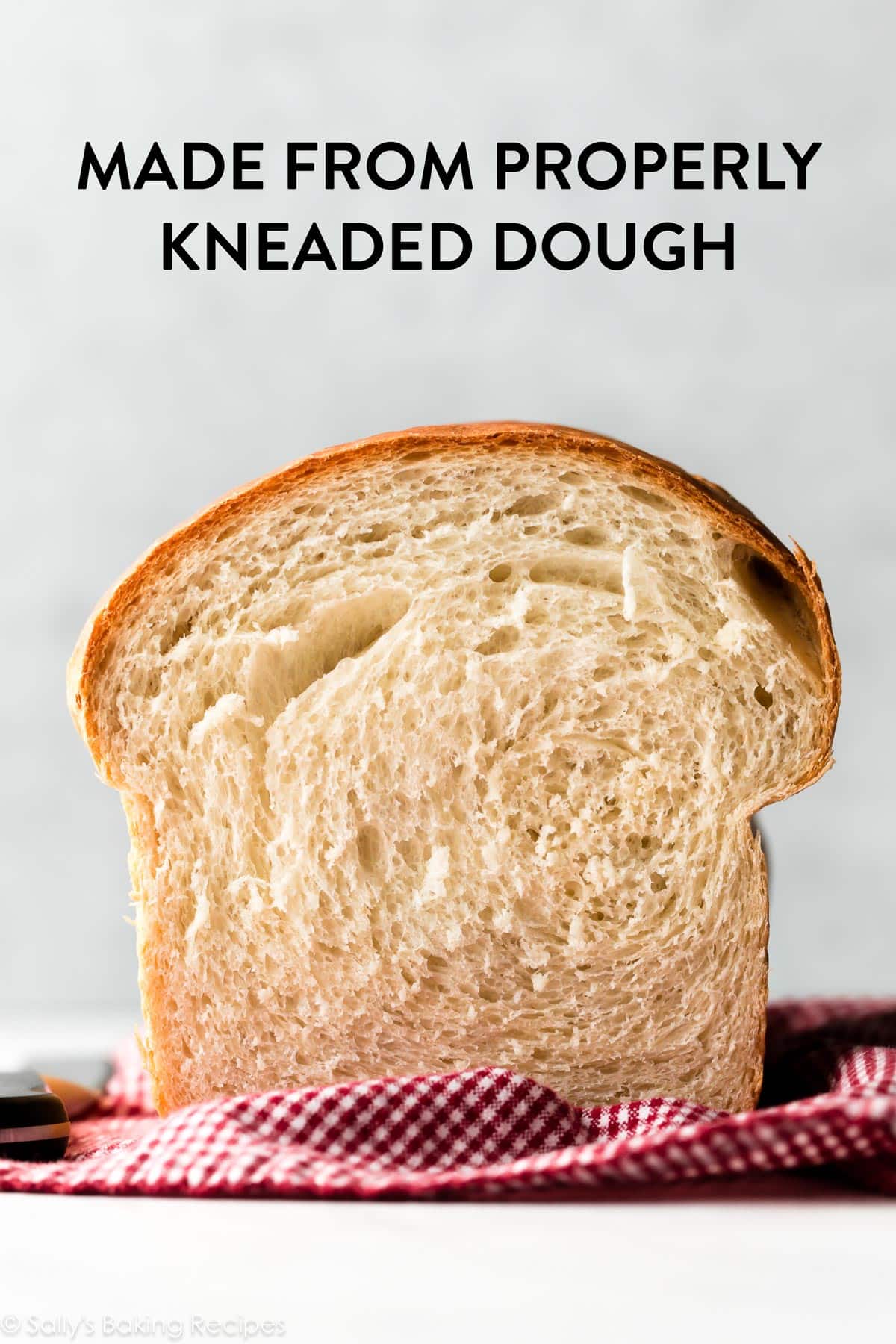
Learn how to Knead Dough via Hand
You probably have a stand mixer with a dough hook attachment, you’ll let the mixer run on low velocity and the dough hook can do the kneading, which makes the process hands-off; however I a lot wish to knead dough via hand, for a number of causes:
- Some doughs may also be actually heavy, and could be an excessive amount of in your mixer to deal with.
- Letting a stand mixer do the paintings can doubtlessly result in over-kneading the dough. It’s so much more difficult to over-knead dough along with your fingers, since you get a just right really feel for the dough, and can understand as the feel adjustments. And in addition… you may most likely get very drained ahead of you succeed in that time!
- And naturally, kneading via hand is a brilliant rigidity reliever—give it a check out!
If you make a decision to knead the dough via hand, right here’s easy methods to do it: The use of the heels of your fingers, gently push the dough clear of you in a rocking movement, alternating fingers as you cross. You need to place some power into it, to actually stretch out the dough.
Video Educational
As you’ll see within the video, after you’ve combined in combination your whole dough substances, it’s kneading time. Right here’s the whole thing you wish to have to knead:
- Blank arduous floor, corresponding to a countertop or a big reducing board.
- Small dish of all-purpose or bread flour, aka “bench flour.”
- A bench scraper is an invaluable device to have readily available; if the dough is sticking on your paintings floor, simply scrape it off with a bench scraper after which upload a bit of extra flour to the skin.
Luck Pointers
- Don’t upload any longer flour than you actually want—use simply sufficient to forestall it from sticking an excessive amount of on your fingers and paintings floor. The dough must nonetheless really feel a bit of cheesy.
- If the dough begins sticking on your fingers, upload a bit of extra flour on your fingers, relatively than to the dough, so that you don’t throw off that cautious ratio of substances on your bread recipe.
- As you knead, you’ll begin to really feel the feel of the dough exchange; it’ll start to easy out and really feel softer and extra elastic.
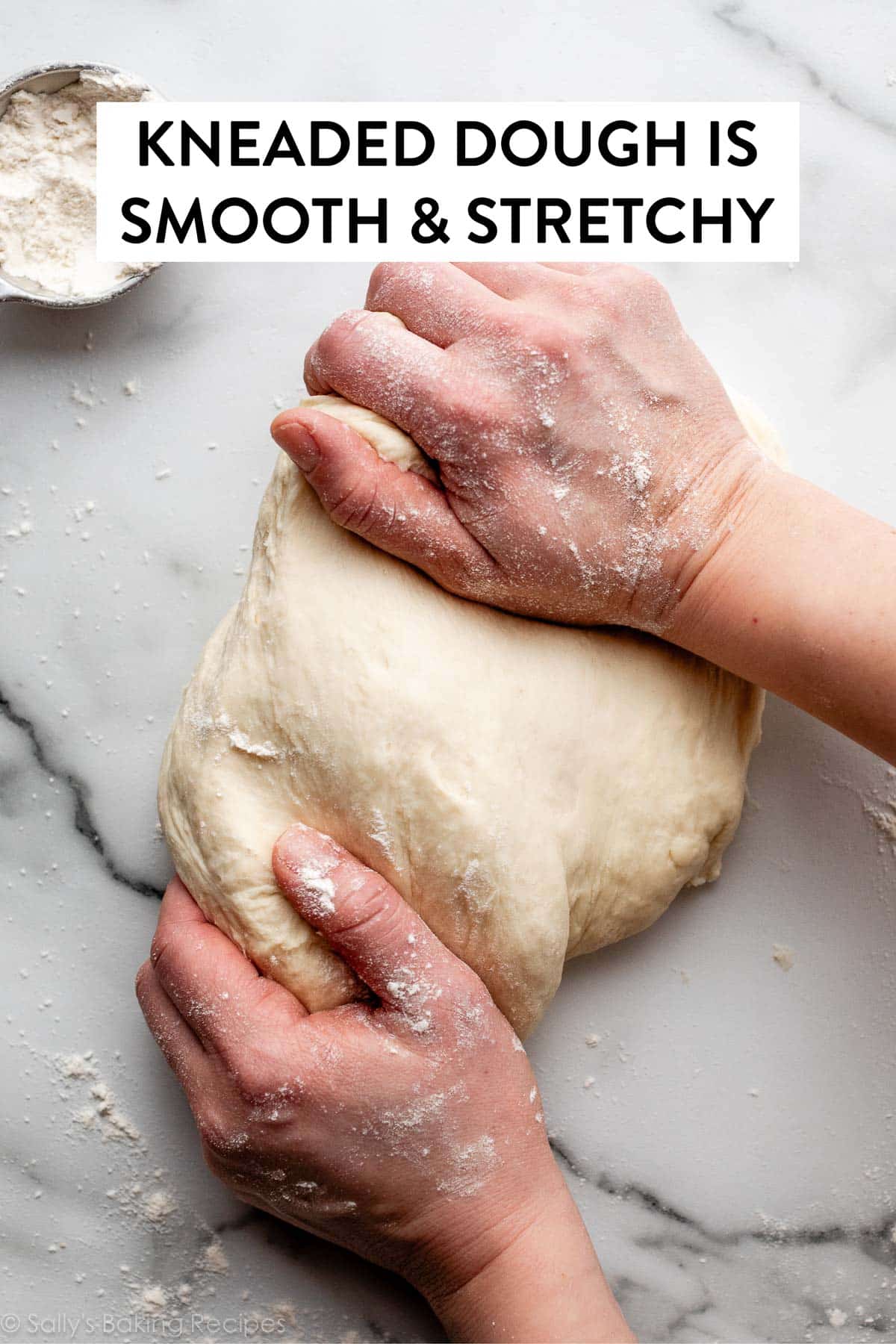
Learn how to Knead Additional-Sticky Dough
You probably have a particularly mushy or sticky dough, there’s every other kneading methodology you’ll use. I take advantage of this system basically with extra-soft wealthy doughs, corresponding to my in a single day cinnamon rolls. Wealthy doughs have extra fats in them (for instance, milk, butter, and egg), versus lean doughs like pizza dough and home made bagels.
With the heel of your hand, push the dough out, then fold it again. Give the folded dough 1 / 4 flip, and repeat. Push it out, fold it again, and switch. This system is a bit more delicate, and I in finding it really works higher when you’ve got a specifically rainy, sticky dough. You’ll be able to watch me do that within the video above.
Learn how to Know When Dough Has Been Kneaded Sufficient
How do we all know when the dough has been kneaded sufficient and is able to upward thrust? I’ve two techniques you’ll check your dough for doneness:
The primary option to take a look at is to easily poke the dough along with your finger. If the dough bounces again with out sticking on your finger, it’s been kneaded sufficient. If it doesn’t, you wish to have to stay kneading.
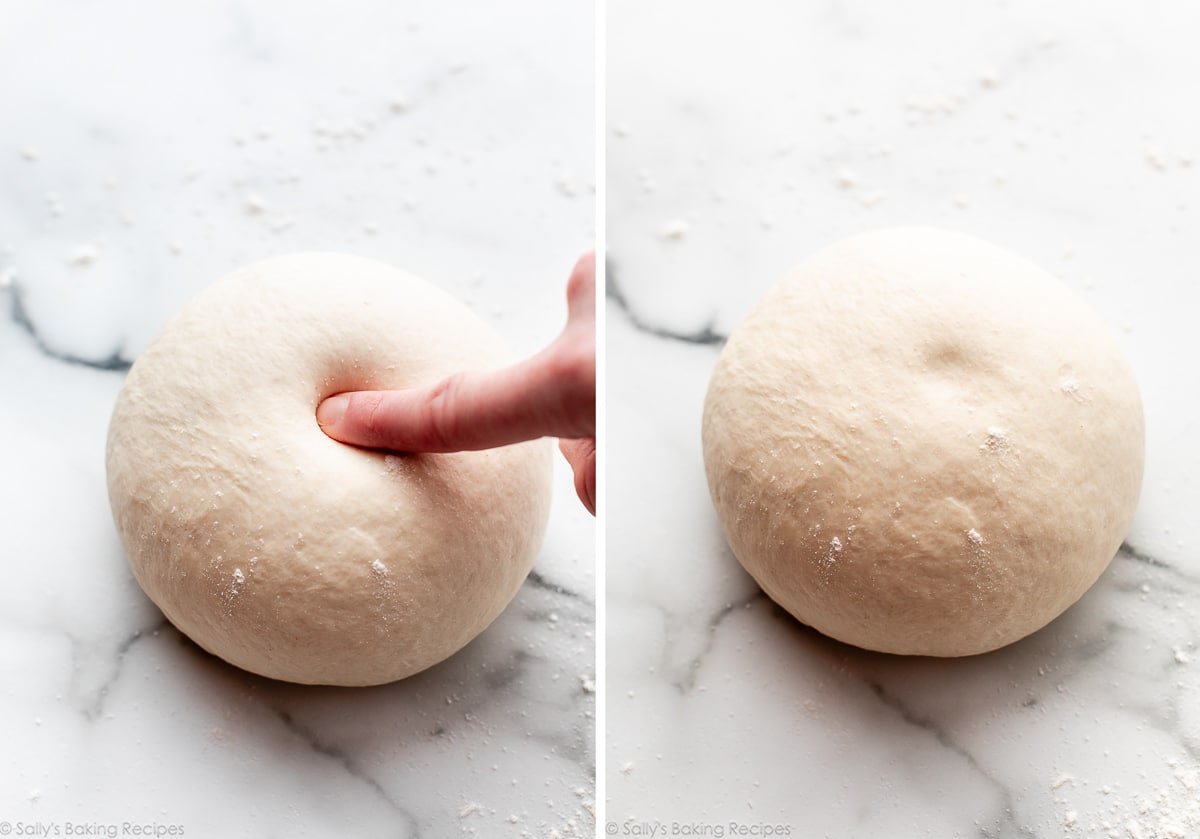
Windowpane Check for Dough
The second one option to take a look at in case your dough has been kneaded lengthy sufficient is one thing referred to as the windowpane check. Tear off a small piece of the dough, and stretch it out till you’ll see some mild coming via it. (Simply dangle it as much as a gentle or a window.) If the dough tears ahead of that time, then you wish to have to stay kneading for a little bit longer.
Kneading duration varies a great deal in yeast bread recipes. Some doughs take simply 3–5 mins, whilst others can take as much as 10–quarter-hour. For the ones longer knead occasions, in case your palms are getting drained, be happy to pop the dough again into your stand mixer and use the dough hook for a couple of mins to provide your fingers a destroy.
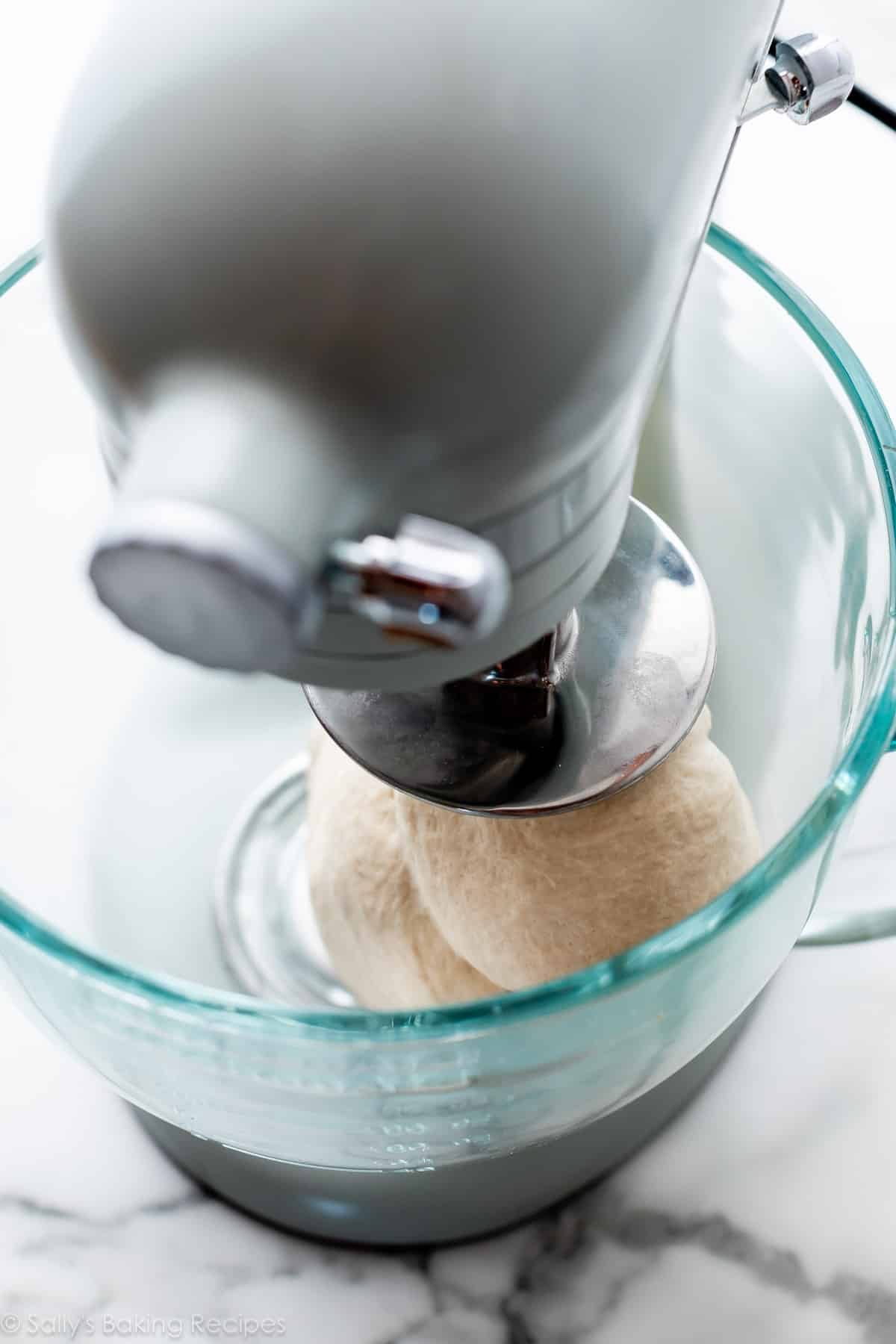
What Does Below-Kneaded Dough Glance Like?
Dough that has no longer been kneaded, or hasn’t been kneaded lengthy sufficient, seems lumpy, doesn’t stretch really well, and tears simply. In case your dough is like this, it wishes extra kneading. Stay kneading it till it’s easy, stretchy, and extra pliable.
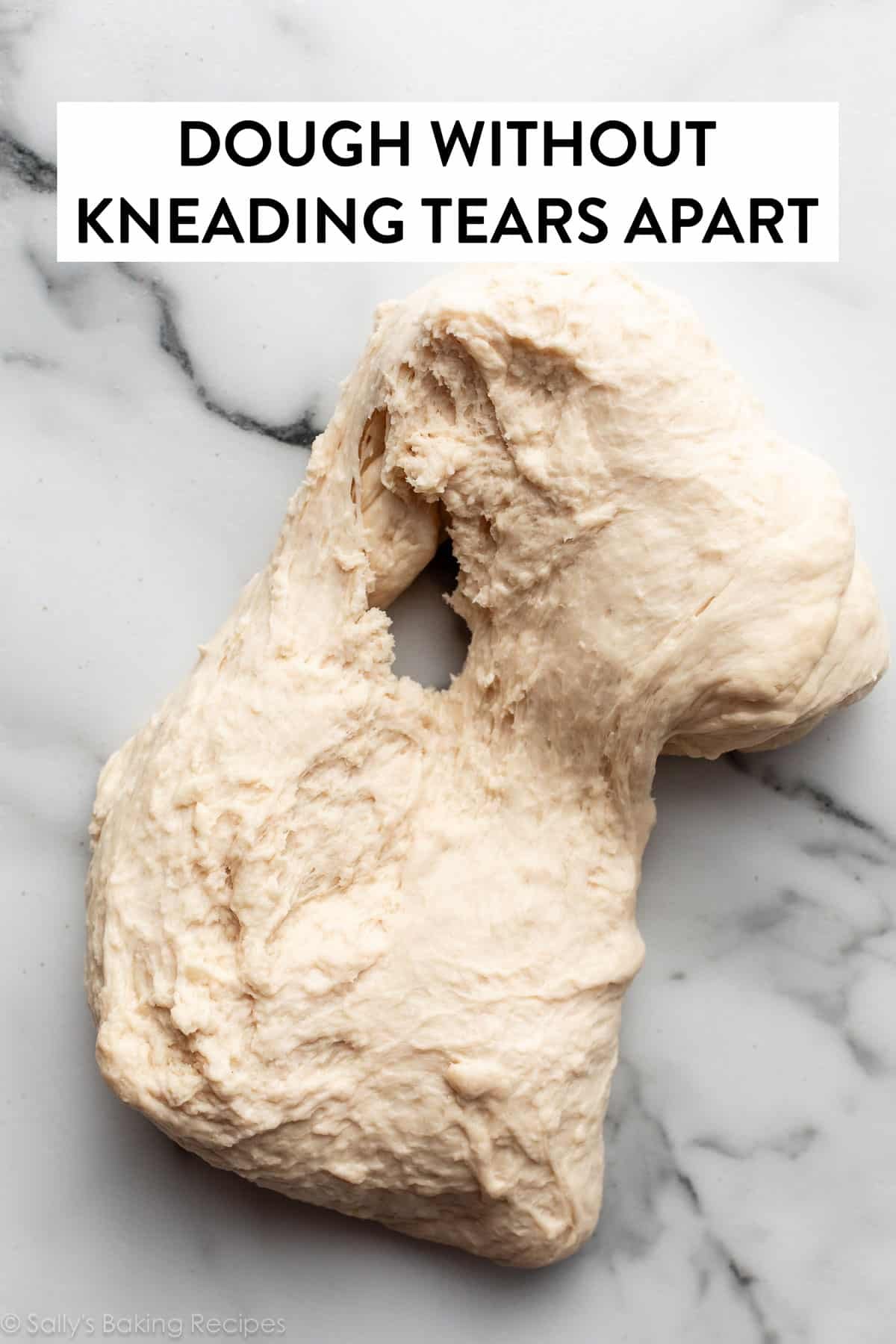
Clearly, kneading dough does take a while, however the effort is easily value it, particularly since you are already taking the time to make bread from scratch. I feel you’ll in finding it’s in fact some of the stress-free steps in bread-making (smartly, apart from for the smelling and tasting portions on the finish). Silky easy, stretchy and cushiony… kneading dough is the unique rigidity reliever toy!
I’m hoping this educational has been useful. Use your new kneading wisdom to make my entire wheat bread when you haven’t already!
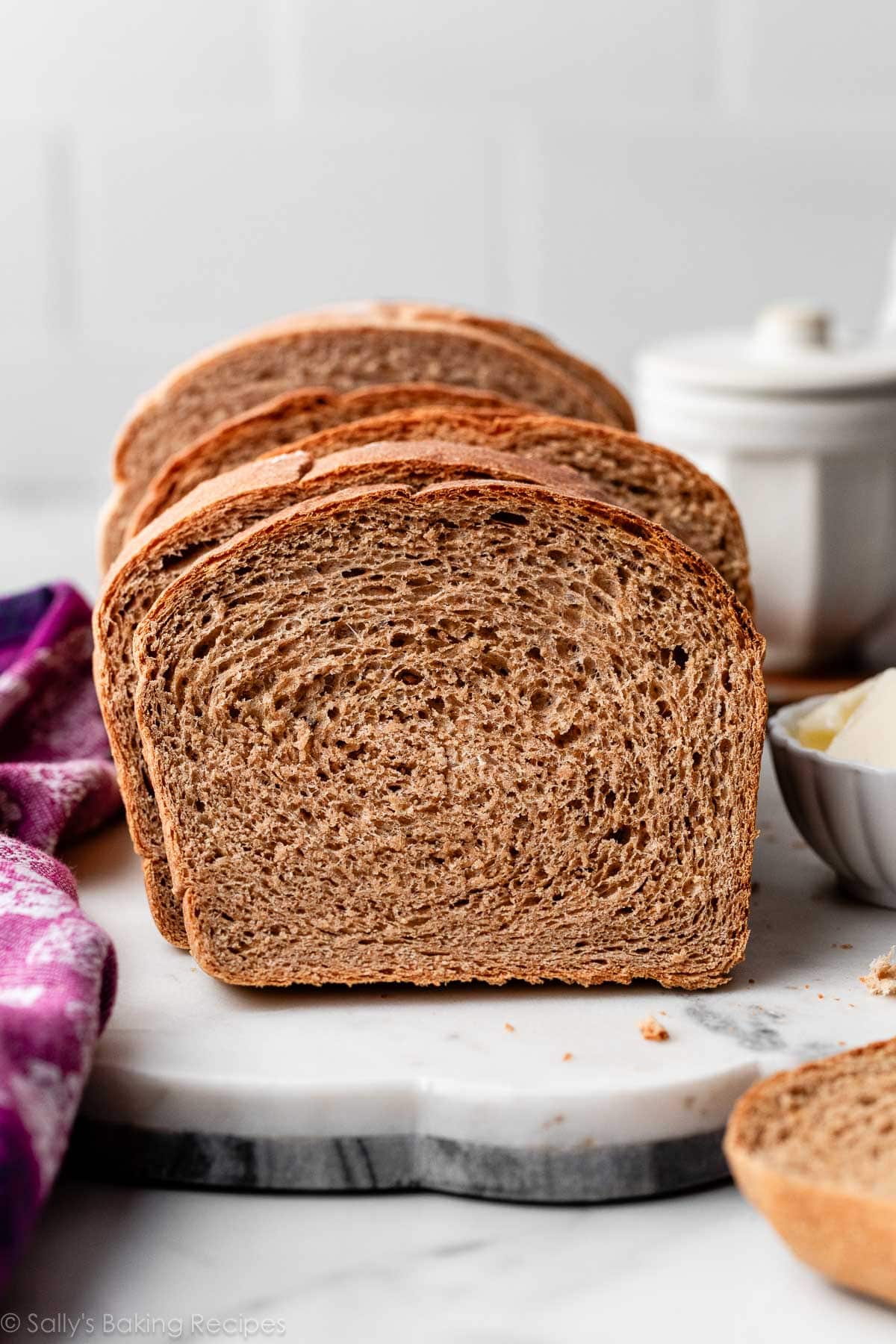
Newbie Bread Bakers, Get started With Those:
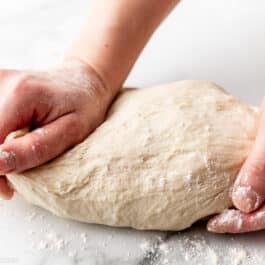
Learn how to Knead Dough via Hand
Prep Time: 10 mins
Cook dinner Time: 0 mins
Overall Time: 10 mins
Yield: 1 dough
Class: Bread
Manner: Kneading
Delicacies: American
Description
Use this educational to lead you via a key step in yeast bread baking: kneading dough. See recipe Notes, and watch the video educational to assist. For those who’re new to running with yeast, reference my Baking with Yeast Information for easy solutions to not unusual yeast FAQs.
Directions
- Evenly flour your fingers, paintings floor, and dough. The use of the heels of your fingers, gently push the dough clear of you in a rocking movement, alternating fingers as you cross. You need to place some power into it, to actually stretch out the dough. The dough would possibly get sticky as you knead, and that’s advantageous. Simply sprinkle a bit of extra flour in your fingers. Don't upload any longer flour than you actually want—use simply sufficient to forestall it from sticking an excessive amount of on your fingers and paintings floor. Dough must nonetheless really feel a bit of cheesy.
- As you knead, you’ll begin to really feel the feel of the dough exchange; it'll start to easy out and really feel softer and extra elastic. The duration of time a dough calls for kneading depends upon the recipe. Some doughs take simply 3–5 mins, whilst others can take as much as 10–quarter-hour. For the ones longer knead occasions, in case your palms are getting drained and you've got a stand mixer, be happy to pop the dough into your stand mixer bowl and use the mixer’s dough hook attachment for a couple of mins to provide your fingers a destroy.
- Learn how to know when to prevent kneading: There are 2 techniques to test whether or not the dough has been kneaded sufficient and is able to upward thrust, and you'll use both or each. The first option to take a look at is to easily poke the dough along with your finger. If the dough bounces again with out sticking on your finger, it’s been kneaded sufficient. If it doesn’t, you wish to have to stay kneading. The 2nd option to take a look at is one thing referred to as the “windowpane check.” Tear off a small (more or less golfball-size) piece of dough and gently stretch it out till it’s skinny sufficient for mild to move via it. Dangle it as much as a window or mild. Does mild move throughout the stretched dough with out the dough tearing first? If this is the case, your dough has been kneaded lengthy sufficient and is able to upward thrust consistent with your recipe’s directions. If no longer, stay kneading.
Notes
- You probably have a particularly mushy, rainy, or sticky dough, there’s every other kneading methodology you'll use. I take advantage of this system basically with extra-soft wealthy doughs. Wealthy doughs have extra fats in them (for instance, milk, butter, and egg), versus lean doughs like pizza dough. With the heel of your hand, push the dough out, then fold it again. Give the folded dough 1 / 4 flip, and repeat. Push it out, fold it again, and switch. This system is a bit more delicate, and I in finding it really works higher when you've got a specifically rainy, sticky dough.
- Can I Knead Dough With a Hand Mixer? No, I don't suggest it. The dough will simply get caught within the beaters. Use a stand mixer or knead via hand.

Leave a Reply